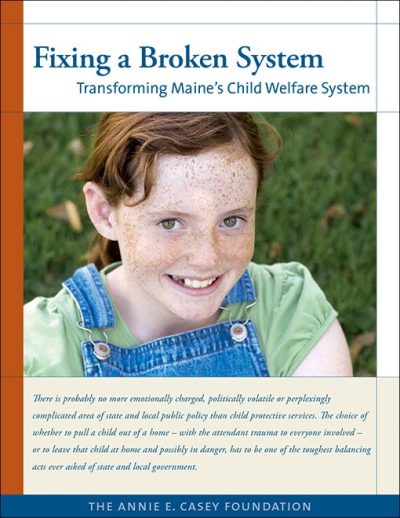Boosting Reunification
In 2003, only 40% of children were reunified with their families within 12 months of the state taking custody. In 2008, that number was up to 60%.

After a child fatality in 2001, Maine’s child welfare and protective services came under scrutiny for their aggressive, their bureaucratic, legalistic approach, and their seeming indifference to the consequences of removing children from their familiar surroundings. The fact is, Maine’s approach to child protection was not all that different from practices in plenty of other jurisdictions.
On the other end, Maine ran into an issue in the mid 1990s when the system was overly cautious about removing a child – who ultimately died – from a dangerous situation.
The result: a loss in balance that led to stark, black and white decision making. Needing to resolve the issues in their system, Maine enlisted the help of the Annie E. Casey Foundation to implement new practices that created better decision making processes, reduced reliance on congregate care, and refocusing practices on permanence.
The number of children in residential care dropped 77% since 2003. 28% more children were placed with relatives than in 2003. Today, Maine has one of the lowest percentages of children in institutional care of any state. Further, it now does routine and regular reviews of each case to ensure children’s needs are met.